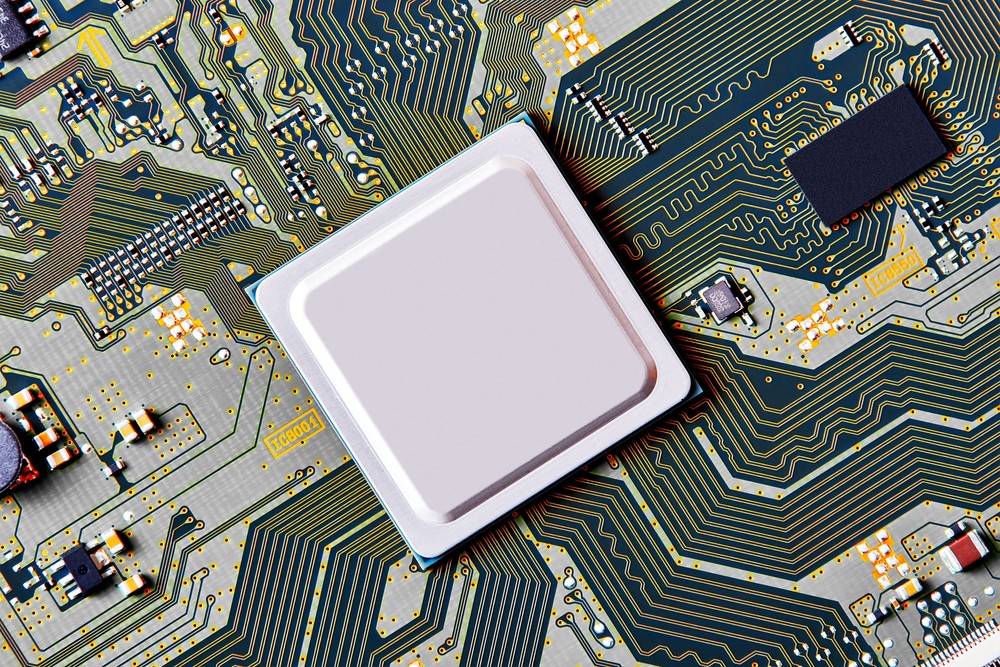In the fast-paced world of technology, enhancing system performance is crucial for IT professionals, system administrators, data center managers, and tech enthusiasts. One of the most effective ways to achieve this is by upgrading your memory boards. These small yet powerful components play a pivotal role in expanding memory capacity and improving data processing speeds, making them essential for any high-performing system.
Memory boards, often overshadowed by more glamorous components like CPUs and GPUs, are the unsung heroes of computing. By enabling faster data access and improved multitasking capabilities, they ensure that your systems run smoothly and efficiently. This post will explore the latest memory board innovations, shedding light on their benefits and helping you understand how they can revolutionize your computing experience.
You’ll also get a closer look at specific products like the Sun X7415A and Sun X7302A-Z memory boards. These examples will demonstrate the tangible benefits of upgrading, backed by real-world case studies. Whether you’re managing a data center or simply want to optimize your home setup, this guide will provide valuable insights and practical tips to get you started.
Understanding Memory Boards
Memory boards are the backbone of any computing system. They are responsible for storing and managing data that the CPU needs to access quickly. These boards come in various types, with DIMMs (Dual Inline Memory Modules) and SIMMs (Single Inline Memory Modules) being the most common. While DIMMs are more prevalent in modern systems due to their superior performance and capacity, SIMMs are still found in older machines.
DIMMs offer several advantages over SIMMs, including higher speed and capacity. They are designed to handle more data at once, making them ideal for applications that require high-performance computing. DIMMs are also more reliable and energy-efficient, which is crucial for maintaining optimal system performance over long periods.
On the other hand, SIMMs, while outdated, still serve a purpose in legacy systems. Understanding the differences between these types of memory boards can help you make an informed decision when upgrading your system. By selecting the right type of memory board, you can ensure that your system runs at its best, whether you’re handling everyday tasks or tackling data-intensive applications.
Product Spotlight 1 Sun X7415A Memory Board
The Sun X7415A memory board is a powerhouse in the realm of hardware upgrades. Known for its exceptional performance and reliability, this memory board is a favorite among IT professionals and system administrators. The X7415A is categorized as a DDR4 SDRAM module, offering speeds that can significantly boost your system’s performance.
With part number X7415A, this memory board boasts impressive specifications. It comes with a large memory capacity, supporting up to 64GB per module. This is particularly beneficial for systems that require substantial memory for multitasking or running complex applications. The board’s high speed and low latency ensure that data is processed quickly and efficiently, minimizing delays and maximizing productivity.
One of the standout benefits of the Sun X7415A memory board is its ability to increase memory capacity without compromising performance. This makes it an excellent choice for data centers and enterprise environments where high performance is crucial. By upgrading to the X7415A, you can expect improved system responsiveness, reduced latency, and an overall better computing experience.
Product Spotlight 2 Sun X7302A-Z Memory Board
Next on our list is the Sun X7302A-Z memory board, another top-tier option for enhancing system performance. This memory board is particularly known for its reliability and efficiency, making it a go-to choice for data-intensive applications. Like the X7415A, the X7302A-Z is a DDR4 SDRAM module, but it offers unique features that set it apart.
With part number X7302A-Z, this memory board provides robust specifications. It supports a memory capacity of up to 32GB per module, making it suitable for systems that need moderate to high memory capacity. Its low power consumption and high efficiency make it an ideal choice for environments where energy savings are a priority.
The main benefits of the Sun X7302A-Z memory board include enhanced reliability and efficiency. Its design ensures stable performance even under heavy workloads, making it perfect for applications that require consistent and reliable data processing. Whether you’re running a data center or managing enterprise-level applications, the X7302A-Z offers a reliable and efficient solution for your memory needs.
Importance of Memory Board Upgrades
Upgrading your memory boards is not just about adding more RAM; it’s about enhancing your system’s overall performance. For IT professionals and system administrators, memory board upgrades can handle larger datasets and improve multitasking capabilities. This is particularly important in environments where multiple applications are running simultaneously, as increased memory capacity can significantly reduce system latency and improve responsiveness.
Memory board upgrades also contribute to overall system stability. By ensuring that your system has enough memory to handle its workload, you can prevent crashes and other performance issues. This is crucial for maintaining productivity and ensuring that your system runs smoothly, even under heavy use.
In addition to improving performance and stability, memory board upgrades can also extend the lifespan of your system. By keeping your hardware up-to-date, you can avoid the need for costly replacements and ensure that your system remains competitive. Whether you’re managing a data center or simply looking to optimize your personal computer, upgrading your memory boards is a cost-effective way to enhance performance and scalability.
Real-World Examples and Case Studies
To illustrate the impact of memory board upgrades, let’s look at some real-world examples and case studies. One notable case is the implementation of memory board upgrades in enterprise servers. By upgrading to high-capacity memory boards like the Sun X7415A, companies have reported significant improvements in data processing speeds and system responsiveness. This has resulted in increased productivity and reduced downtime, allowing businesses to operate more efficiently.
In the realm of scientific computing, memory board upgrades have played a crucial role in accelerating research and innovation. For example, in a scientific computing environment, upgrading to the Sun X7302A-Z memory board has enabled researchers to handle larger datasets and run more complex simulations. This has led to faster results and more accurate findings, demonstrating the critical role of memory boards in advancing scientific research.
These examples highlight the tangible benefits of memory board upgrades, showcasing how they can improve performance and efficiency across various applications. Whether you’re in enterprise IT or scientific research, upgrading your memory boards can provide significant advantages and help you achieve your goals more effectively.
Factors to Consider Before Upgrading Memory Boards
Before upgrading your memory boards, there are several factors to consider to ensure that you choose the right solution for your needs. One of the most important factors is compatibility. It’s crucial to ensure that the memory boards you choose are compatible with your existing hardware. This includes checking the type of memory (e.g., DDR4), as well as the maximum capacity and speed supported by your system.
Another important factor is capacity. Depending on your specific use case, you may need more or less memory. For example, data-intensive applications may require higher memory capacity to handle large datasets, while everyday tasks may not require as much. By assessing your needs and choosing the right capacity, you can ensure that your system runs smoothly and efficiently.
Latency is also an important consideration. Lower latency means faster data access, which can significantly improve system performance. When choosing memory boards, look for options with low latency to ensure that your system can handle data-intensive tasks without delays.
Finally, best practices for installing and configuring memory board upgrades are essential for optimizing system performance. This includes following manufacturer guidelines, ensuring proper installation, and regularly updating firmware and drivers. By taking these steps, you can maximize the benefits of your memory board upgrades and ensure that your system performs at its best.
Future Trends in Memory Board Technology
The world of memory board technology is constantly evolving, with new advancements on the horizon. One of the most exciting trends is the development of DDR5 memory, which promises even higher speeds and capacities than its predecessor, DDR4. This new generation of memory boards will enable faster data processing and improved performance, making them ideal for high-performance computing applications.
Another emerging trend is the use of HBM (High Bandwidth Memory). HBM offers higher bandwidth and lower power consumption compared to traditional memory technologies. This makes it an attractive option for applications that require high-speed data access and energy efficiency. As HBM technology continues to advance, it is expected to play a significant role in future system architectures.
These advancements in memory board technology have the potential to revolutionize the way we use and interact with computer systems. By staying informed about these trends and adopting new technologies as they become available, IT professionals and tech enthusiasts can ensure that their systems remain competitive and capable of handling future challenges.
Conclusion
In conclusion, upgrading memory boards is a powerful way to boost system performance and scalability. By exploring the latest innovations and understanding the benefits of specific products like the Sun X7415A and Sun X7302A-Z, you can make informed decisions that enhance your computing experience.
Whether you’re an IT professional, system administrator, or tech enthusiast, memory board upgrades offer a cost-effective solution for maximizing the potential of your computer systems. With the right upgrades, you can achieve improved performance, greater stability, and extended system lifespan. Don’t hesitate to explore your options and take advantage of the benefits that memory board upgrades can offer.
For those looking to further optimize their systems, consider consulting with experts or using specialized tools to ensure that you choose the best memory board solutions for your needs. By staying informed and proactive, you can stay ahead of the curve and ensure that your systems deliver top-notch performance.





